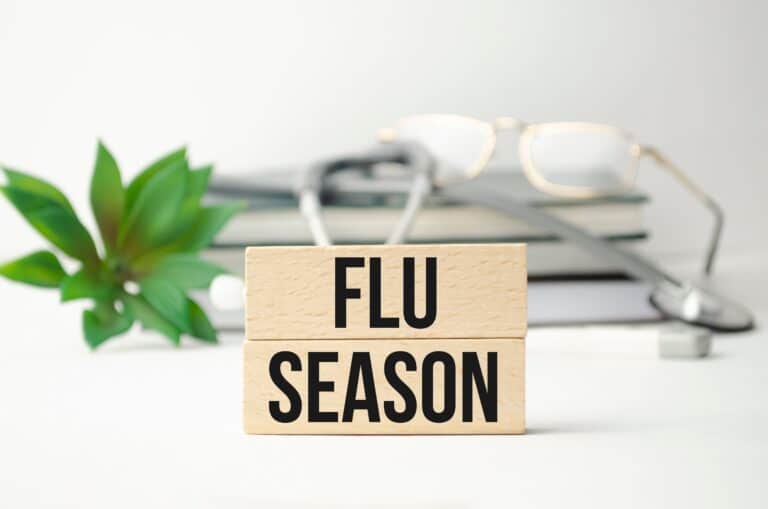https://compcaremd.com/wp-content/uploads/2022/06/1-1-300×300.jpg
Anxiety refers to the anticipation of a future concern and is more associated with muscle tension and avoidance behavior. Fear is an emotional response to an immediate threat and is more associated with a fight or flight reaction either staying to fight or leaving to escape danger.
Anxiety is a normal reaction to stress and can be beneficial in some situations. It can alert us to dangers and help us prepare and pay attention. Anxiety disorders differ from normal feelings of nervousness or anxiousness and involve excessive fear or anxiety.
Anxiety disorders are the most common of mental disorders and affect nearly 30% of adults at some point in their lives. But anxiety disorders are treatable and a number of effective treatments are available. Treatment helps most people lead normal productive lives.
Anxiety disorders can cause people to try to avoid situations that trigger or worsen their symptoms. Job performance, school work and personal relationships can be affected. In general, for a person to be diagnosed with an anxiety disorder, the fear or anxiety must:
- Be out of proportion to the situation or age-inappropriate
- Hinder ability to function normally
There are several types of anxiety disorders, including generalized anxiety disorder, panic disorder, specific phobias, agoraphobia, social anxiety disorder and separation anxiety disorder.
Types of Anxiety Disorders
Generalized anxiety disorder involves persistent and excessive worry that interferes with daily activities. This ongoing worry and tension may be accompanied by physical symptoms, such as restlessness, feeling on edge or easily fatigued, difficulty concentrating, muscle tension, or problems sleeping. Often the worries focus on everyday things such as job responsibilities, family health, or minor matters such as chores, car repairs, or appointments.
Panic Disorder
The core symptom of panic disorder is recurrent panic attacks, an overwhelming combination of physical and psychological distress. During an attack several of these symptoms occur in combination:
- Palpitations, pounding heart or rapid heart rate
- Sweating
- Trembling or shaking
- Feeling of shortness of breath or smothering sensations
- Chest pain
- Feeling dizzy, light-headed or faint
- Feeling of choking
- Numbness or tingling
- Chills or hot flashes
- Nausea or abdominal pains
- Feeling detached
- Fear of losing control
- Fear of dying
Because the symptoms are so severe, many people who experience a panic attack may believe they are having a heart attack or other life-threatening illness. They may go to a hospital emergency department. Panic attacks may be expected, such as a response to a feared object, or unexpected, apparently occurring for no reason. The mean age for onset of panic disorder is 20-24. Panic attacks may occur with other mental disorders such as depression or PTSD.
Phobias, Specific Phobia
A specific phobia is excessive and persistent fear of a specific object, situation or activity that is generally not harmful. Patients know their fear is excessive, but they can’t overcome it. These fears cause such distress that some people go to extreme lengths to avoid what they fear. Examples are public speaking, fear of flying or fear of spiders.
Agoraphobia
Agoraphobia is the fear of being in situations where escape may be difficult or embarrassing, or help might not be available in the event of panic symptoms. The fear is out of proportion to the actual situation and lasts generally six months or more and causes problems in functioning. A person with agoraphobia experiences this fear in two or more of the following situations:
- Using public transportation
- Being in open spaces
- Being in enclosed places
- Standing in line or being in a crowd
- Being outside the home alone
The individual actively avoids the situation, requires a companion or endures with intense fear or anxiety. Untreated agoraphobia can become so serious that a person may be unable to leave the house. A person can only be diagnosed with agoraphobia if the fear is intensely upsetting, or if it significantly interferes with normal daily activities.
Social Anxiety Disorder (previously called social phobia)
A person with social anxiety disorder has significant anxiety and discomfort about being embarrassed, humiliated, rejected or looked down on in social interactions. People with this disorder will try to avoid the situation or endure it with great anxiety.
Common examples are extreme fear of public speaking, meeting new people or eating/drinking in public. The fear or anxiety causes problems with daily functioning and lasts at least six months.
Separation Anxiety Disorder
A person with separation anxiety disorder is excessively fearful or anxious about separation from those with whom he or she is attached. The feeling is beyond what is appropriate for the person’s age, persists (at least four weeks in children and six months in adults) and causes problems functioning.
A person with separation anxiety disorder may be persistently worried about losing the person closest to him or her, may be reluctant or refuse to go out or sleep away from home or without that person, or may experience nightmares about separation. Physical symptoms of distress often develop in childhood, but symptoms can carry though adulthood.
Risk Factors
The causes of anxiety disorders are currently unknown but likely involve a combination of factors including genetic, environmental, psychological and developmental. Anxiety disorders can run in families, suggesting that a combination of genes and environmental stresses can produce the disorders.
Diagnosis and Treatment
The first step is to see your doctor make sure there is no physical problem causing the symptoms. If an anxiety disorder is diagnosed, a mental health professional can work with you on finding the best treatment. Unfortunately, many people with anxiety disorders don’t seek help. They don’t realize that they have an illness for which there are effective treatments.
Although each anxiety disorder has unique characteristics, most respond well to two types of treatment: psychotherapy or “talk therapy,” and medications. These treatments can be given alone or in combination.
Cognitive behavior therapy (CBT), a type of talk therapy, can help a person learn a different way of thinking, reacting, and behaving to help them feel less anxious. Medications will not cure anxiety disorders but can provide significant relief from symptoms. The most commonly used medications are anti-anxiety medications (generally prescribed only for a short period of time) and antidepressants. Beta-blockers, used for heart conditions, are sometimes used to control physical symptoms of anxiety.
What are the symptoms of anxiety?
Anxiety feels different depending on the person experiencing it. Feelings can range from butterflies in your stomach to a racing heart. You might feel out of control like there’s disconnect between your mind and body.
Other ways people experience anxiety include nightmares, panic attacks, and painful thoughts or memories that you can’t control. You may have a general feeling of fear and worry, or you may fear a specific place or event.
Symptoms of general anxiety include:
- increased heart rate
- rapid breathing
- restlessness
- trouble concentrating
- difficulty falling asleep
Your anxiety symptoms might be totally different from someone else’s. That’s why it’s important to know all the ways anxiety can present itself. Read about the many types of anxiety symptoms you might experience.
What causes anxiety?
Researchers are not sure of the exact cause of anxiety. But, it’s likely a combination of factors plays a role. These include genetic and environmental factors, as well as brain chemistry. In addition; researchers believe that the areas of the brain responsible for controlling fear may be impacted.
Current research on anxiety is taking a deeper look at the parts of the brain that are involved with anxiety. Learn more about what the researchers are finding.
Are there tests that diagnose anxiety?
A single test can’t diagnose anxiety. Instead, an anxiety diagnosis requires a lengthy process of physical examinations, mental health evaluations, and psychological questionnaires.
Some doctors may conduct a physical exam, including blood or urine tests to rule out underlying medical conditions that could contribute to the symptoms you’re experiencing. Several anxiety tests and scales are also used to help your doctor assess the level of anxiety you’re experiencing. Reach about each of these tests.
What natural remedies are used for anxiety?
Lifestyle changes can be an effective way to relieve some of the stress and anxiety you may cope with every day. Most of the natural “remedies” consist of caring for your body, participating in healthy activities, and eliminating unhealthy ones.
These include:
· Getting enough sleep
· Meditating
· Staying active and exercising
· Eating a healthy diet
· Staying active and working out
· Avoiding alcohol
· Avoiding caffeine
· Quitting smoking cigarettes
If these lifestyle changes seem like a positive way to help you eliminate some anxiety, read about how each one works plus, get more great ideas for treating anxiety.
Can foods treat anxiety?
Medication and talk therapy are commonly used to treat anxiety. Lifestyle changes, like getting enough sleep and regular exercise, can also help. In addition, some research suggests the foods you eat may have a beneficial impact on your brain if you frequently experience anxiety
These foods include
· Salmon
· Chamomile
· Turmeric
· Dark chocolate
· Yogurt
· Green tea
Copyright © 2024 Medical Marijuana Doctor - MMJ Doctor Near Me
Site by CannaPlanners




